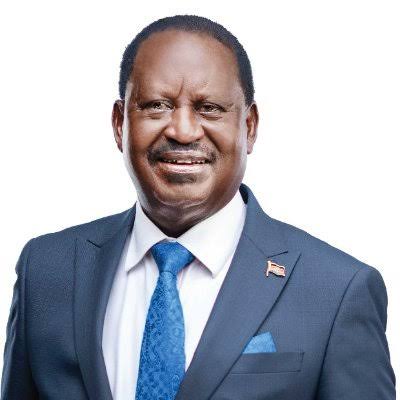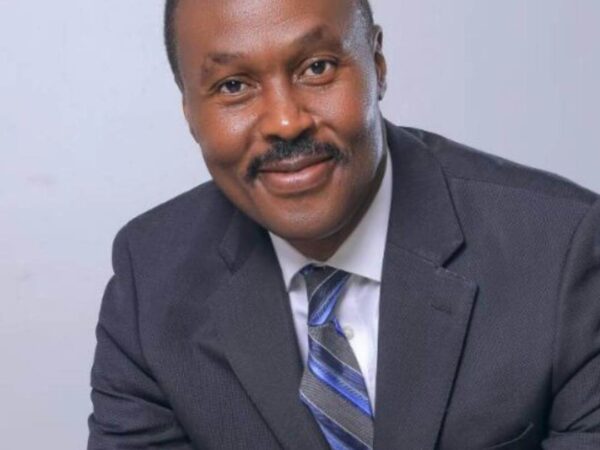Early Life and Family Roots
Raila Amolo Odinga was born on January 7, 1945, in Maseno, a serene village in the heart of Nyanza Province, near the shores of Lake Victoria. His father, Jaramogi Oginga Odinga, was a charismatic nationalist who would later become Kenya’s first Vice-President and one of the leading voices in the country’s struggle for independence. His mother, Mary Juma Odinga, was a strong-willed woman of faith and discipline who held the family together during turbulent times.
Born into a politically conscious household, Raila’s childhood was steeped in discussions of justice, liberation, and the dream of a free Kenya. The Odinga home was often visited by freedom fighters and political thinkers — an early schooling in public life that left an indelible impression on the young boy.
Education and Years Abroad
Raila began his education at Kisumu Union Primary School, later attending Maranda High School, where he distinguished himself not only through academic brilliance but also leadership and resilience.
In 1962, his father secured a scholarship for him to study in the German Democratic Republic (East Germany) — a rare opportunity at the time. He first attended the Herder Institute in Leipzig, where he studied German, and later joined the Technical University of Magdeburg to pursue Mechanical Engineering.
In Germany, Raila encountered the ideals of social democracy, discipline, and industrial order — values that would shape his worldview. He graduated in 1970 with a Master’s Degree in Mechanical Engineering, fluent in both German and English. Those who knew him recall a serious young man, curious, reflective, and already politically alert.
Return to Kenya and Professional Life
When he returned to Kenya in 1970, Raila joined the University of Nairobi as a lecturer in the Department of Mechanical Engineering. His passion for technology and development drove him to encourage local innovation, long before industrialization became a political slogan.
Later, he joined the Kenya Bureau of Standards (KEBS), where he rose to the position of Deputy Director. In parallel, he established his own small manufacturing firm, Standard Processing Equipment Construction & Erection Ltd, which built gas cylinders — a bold venture for a young engineer at the time.
But the restless spirit of his father stirred within him. Kenya under President Jomo Kenyatta and later Daniel arap Moi was slipping into authoritarianism. Raila’s ideals could not find peace in the comfort of an office.
The Awakening: Into the Struggle
By the late 1970s, political tensions were rising. Opposition voices were muted, and dissent was treated as treason. Raila, influenced by his father’s resistance to one-party rule, began secretly aligning with reformists pushing for greater freedoms.
In 1982, discontent within the air force led to a failed coup attempt against Moi’s regime. The government accused Raila of being among its civilian conspirators — a charge he denied but which changed his life forever. He was arrested and detained without trial for six long years.
For much of that time, Raila was held in solitary confinement. Cut off from his family and the world, he endured psychological and physical torment. Yet, as he would later say, “Prison broke my chains, not my spirit.” When he was finally released in 1988, he emerged thinner, grayer, but unbowed — transformed from an engineer into a hardened freedom fighter.
Return to the Political Arena
Kenya in the late 1980s was still under the tight grip of a single-party state. Raila continued to agitate for change, becoming one of the key underground voices in the movement that would eventually force Moi to lift the ban on opposition parties.
In 1991, facing another round of harassment, he fled into exile — moving between Norway and other countries where he rallied international support for Kenya’s pro-democracy cause.
He returned home in 1992, just as multiparty politics was reinstated, and joined his father’s party, FORD–Kenya (Forum for the Restoration ofg Democracy–Kenya). That year, he was elected Member of Parliament for Lang’ata Constituency in Nairobi. It was the beginning of a political career that would dominate Kenyan politics for the next three decades.
Political Evolution and Realignments
After the death of his father in 1994, FORD–Kenya split. Raila left to form the National Development Party (NDP) in 1996. Through NDP, he began reaching out beyond his traditional base, crafting a more national appeal.
In a surprising move in 1998, he merged NDP with KANU, then Kenya’s ruling party under President Moi. This alliance saw Raila appointed to Cabinet as Minister for Energy, but it was a brief marriage of convenience.
When Moi attempted to impose Uhuru Kenyatta as his successor in 2002, Raila led a powerful rebellion within KANU, walking out with other heavyweights to form the Rainbow Coalition. This coalition morphed into the National Rainbow Coalition (NARC), which in 2002 swept Mwai Kibaki to power — ending 40 years of KANU rule. Raila’s rallying cry, “Kibaki Tosha!” (Kibaki is fit!), became historic.
The Years of Conflict and Coalition
However, the post-election honeymoon quickly soured. Disagreements over constitutional reform led to a major rift between Raila and President Kibaki.
In 2005, Raila led the campaign against the government-backed draft constitution, symbolized by the Orange symbol — and won. The movement evolved into the Orange Democratic Movement (ODM), which he would lead for the rest of his life.
In the 2007 general election, Raila ran for president against Kibaki. Early tallies showed him in the lead, but the final announcement gave victory to Kibaki. Accusations of electoral fraud ignited one of Kenya’s darkest moments, with over 1,000 people killed and hundreds of thousands displaced in post-election violence.
After international mediation led by former UN Secretary-General Kofi Annan, a power-sharing deal was signed. Raila became Prime Minister in a coalition government with Kibaki as President — a unique arrangement that restored calm.
During this period (2008–2013), Kenya achieved major reforms, including the 2010 Constitution, which devolved power to counties and introduced new checks on the presidency — a reform Raila had fought for all his life.
Enduring Opposition and the Handshake
Raila ran for president again in 2013, 2017, and 2022 — each time claiming that victory had been stolen through manipulation of the vote.
The 2017 election was particularly turbulent. After the Supreme Court annulled the results citing irregularities — a first in Africa — Raila boycotted the rerun and went on to swear himself in as the “People’s President” in January 2018.
In a surprising twist, two months later, Raila and President Uhuru Kenyatta publicly reconciled in what became known as “The Handshake.” This moment eased political tensions and led to the Building Bridges Initiative (BBI) — an ambitious attempt to reform Kenya’s political system. Though later struck down by the courts, it redefined Raila’s image: from a perpetual protester to a statesman seeking unity.
In the 2022 election, Raila, backed by Uhuru Kenyatta, faced William Ruto. The election was close, but Ruto was declared winner. Despite disappointment, Raila accepted the outcome with unusual calm, signaling perhaps the twilight of his long political journey.
Final Years and Death
In his final years, Raila increasingly took on a continental role. In 2023, the African Union appointed him as High Representative for Infrastructure Development in Africa, a recognition of his experience and statesmanship.
In 2024 and 2025, he remained active in national dialogue, occasionally mediating between government and opposition, and mentoring young leaders within ODM.
In October 2025, while receiving medical treatment in Kochi, India, Raila Odinga passed away following a cardiac arrest. He was 80 years old. His death was announced to a nation that fell silent in grief. From Kisumu to Nairobi, from Kibera to Mombasa, the streets filled with mourners chanting “Baba! Baba!” — the affectionate title his supporters had given him: Father of the Nation’s Struggle.
Legacy
Raila Odinga’s life was a story of resilience, courage, and unyielding faith in democracy. Though he never became President, he changed the presidency forever — by forcing it to share power, by fighting for devolution, by daring to speak when silence was safer.
He was detained, betrayed, celebrated, and misunderstood. Yet, through every phase, Raila remained constant — a man who believed that Kenya could be freer, fairer, and more just.
His legacy lives on not in titles won, but in battles fought: for democracy, for justice, and for the dream of a Kenya that belongs to all.
As one journalist wrote upon his death:
“He may never have entered State House, but Raila Odinga built the road that led there — for all who believe in freedom.”

